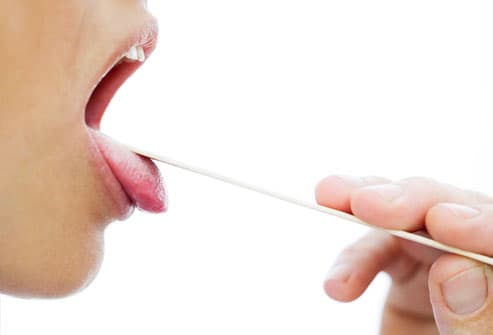
When taken at face value, diet soda seems like a health-conscious choice. It saves you the 140-plus calories you’d find in a sugary soft drink while still satisfying your urge for something sweet with artificial sweeteners like aspartame, saccharin, and sucralose. But there’s more to this chemical cocktail than meets the eye.
It confuses your body
Artificial sweeteners have more intense flavor than real sugar, so over time products like diet soda dull our senses to naturally sweet foods like fruit, says Brooke Alpert, RD, author of The Sugar Detox. Even more troubling, these sugar stand-ins have been shown to have the same effect on your body as sugar. “Artificial sweeteners trigger insulin, which sends your body into fat storage mode and leads to weight gain,” Alpert says.
It could lead to weight gain, not weight loss
Diet soda is calorie-free, but it won’t necessarily help you lose weight. Researchers from the University of Texas found that over the course of about a decade, diet soda drinkers had a 70% greater increase in waist circumference compared with non-drinkers. And get this: participants who slurped down two or more sodas a day experienced a 500%greater increase. The way artificial sweeteners confuse the body may play a part, but another reason might be psychological, says Minnesota-based dietitian Cassie Bjork. When you know you’re not consuming any liquid calories, it might be easier to justify that double cheeseburger or extra slice of pizza.
It’s associated with an increased risk of type 2 diabetes
Drinking one diet soda a day was associated with a 36% increased risk of metabolic syndrome and diabetes in a University of Minnesota study. Metabolic syndrome describes a cluster of conditions (including high blood pressure, elevated glucose levels, raised cholesterol, and large waist circumference) that put people at high risk for heart disease, stroke, and diabetes, Bjork explains.
It has no nutritional value
When you drink diet soda, you’re not taking in any calories—but you’re also not swallowing anything that does your body any good, either. The best no-calorie beverage? Plain old water, says Bjork. “Water is essential for many of our bodily processes, so replacing it with diet soda is a negative thing,” she says. If it’s the fizziness you crave, try sparkling water.
Its sweetener is linked to headaches
Early studies on aspartame and anecdotal evidence suggests that this artificial sweetener may trigger headaches in some people. “I have several clients who used to suffer from migraines and pinpointed their cause to diet soda,” Bjork says.
It’ll ruin your smile over time
Excessive soda drinking could leave you looking like a Breaking Bad extra, according to a case study published in the journalGeneral Dentistry. The research compared the mouths of a cocaine-user, a methamphetamine-user, and a habitual diet-soda drinker, and found the same level of tooth erosion in each of them. The culprit here is citric acid, which weakens and destroys tooth enamel over time.
It makes drinking more dangerous
Using diet soda as a low-calorie cocktail mixer has the dangerous effect of getting you drunk faster than sugar-sweetened beverages, according to research from Northern Kentucky University. The study revealed that participants who consumed cocktails mixed with diet drinks had a higher breath alcohol concentration than those who drank alcohol blended with sugared beverages. The researchers believe this is because our bloodstream is able to absorb artificial sweetener more quickly than sugar.
It’s associated with depression
A recent study presented at a the American Academy of Neurology meeting found that over the course of 10 years, people who drank more than four cups or cans of soda a day were 30% more likely to develop depression than those who steered clear of sugary drinks. The correlation held true for both regular and diet drinks, but researchers were sure to note that the risk appeared to be greater for those who primarily drank diet sodas and fruit punches. Although this type of study can’t prove cause and effect, its findings are worth considering.
It may be bad for your bones
Women over 60 are already at a greater risk for osteoporosis than men, and Tufts University researchers found that drinking soda, including diet soda, compounds the problem. They discovered that female cola drinkers had nearly 4% lower bone mineral density in their hips than women who didn’t drink soda. The research even controlled for the participants’ calcium and vitamin D intake. Additionally, a 2006 study published in the American Journal of Clinical Nutrition found that cola intake (all kinds, not just diet) was associated with low bone-mineral density in women.
It may hurt your heart
Just one diet soft drink a day could boost your risk of having a vascular event such as stroke,heart attack, or vascular death, according to researchers from the University of Miami and Columbia University. Their study found that diet soda devotees were 43% more likely to have experienced a vascular event than those who drank none. Regular soda drinkers did not appear to have an increased risk of vascular events. Researchers say more studies need to be conducted before definitive conclusions can be made about diet soda’s effects on health.
Source: http://www.health.com/health/gallery/0,,20739512_last,00.html




 Another study appears to find benefits from eating chocolate: researchers from the University of Granada in Spain analzying data on European teenagers found a strong link between high chocolate consumption and low levels of body fat.
Another study appears to find benefits from eating chocolate: researchers from the University of Granada in Spain analzying data on European teenagers found a strong link between high chocolate consumption and low levels of body fat.







